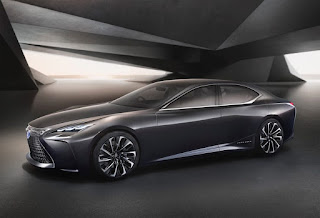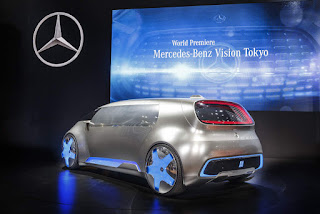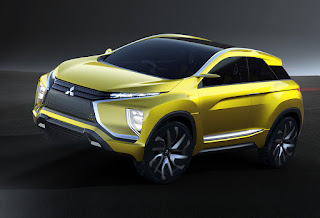Since the 'Benz Patent Motorwagen' was launched in 1879, cars have
evolved into technological marvels, with new features like electric
powertrains and autonomous driving capabilities pushing our expectations
into the realms of science fiction. Additionally, new ownership models
like car-sharing mean the once-important aspiration of owning a car has evolved into Generation Y just wanting to access one.

However, to-date, the car fundamentally does exactly what the horse and cart did before it - to transport people (and luggage) from A to B. But is that about to change, with in-car battery storage introducing new propositions and business models?
This week, in partnership with ENEL, Nissan introduced smart grid trials, with the car being an 'energy hub' for the home.

The concept is straightforward:

A video from Nissan describes a little more about the concept:
Other energy storage options can be found in static battery solutions much like the recent Tesla Powerwall and a similar approach from Daimler, but of course these can't also transport you to difference places!



Models shown above from Toyota, Honda and Mitsubishi respectively.
There are two propositions which seem to make sense to exploit this technology - it will be interesting to see how soon they may appear...
Household energy
In the most basic model, a single household uses their charged car when at home to provide additional energy for their home (V2H), reducing the reliance on peak grid electricity (and avoiding potential high-carbon emitting loads like backup diesel generators). This can be more intelligent still if the household can also generate their own electricity, e.g. via solar panels... potentially getting close to being 'off grid'. Excess energy can be sold to the grid (V2G).
Community/collective energy
The proposition above may be attractive enough to households to reverse the trend of declining car ownership, but perhaps that's an irreversible trend. If so, there may be some innovative business models which emerge, using a fleet of vehicles, where households do not own a vehicle:
Of course there are a significant number of barriers to overcome:
Do you think any of these concepts could become a commercial reality, at scale?
*UPDATE* In fact, BMW are currently running a trial in the US, with 100 BMW i3 drivers, and their utility, PG&E. As part of the BMW i Charge Forward programme, BMWi will be able to remotely delay the charging of EVs by up to an hour, to better match the grid requirements, whilst allowing the driver to override/opt-out if required.
All images © respective manufacturers

However, to-date, the car fundamentally does exactly what the horse and cart did before it - to transport people (and luggage) from A to B. But is that about to change, with in-car battery storage introducing new propositions and business models?
This week, in partnership with ENEL, Nissan introduced smart grid trials, with the car being an 'energy hub' for the home.

The concept is straightforward:
- 'Vehicle to Home' (V2H) allows energy stored in the car battery to be used to power the home - useful when buying electricity directly from the grid may be more expensive, e.g. at peak times
- 'Vehicle to Grid' (V2G) allows the car owner to sell excess stored energy from the car battery back to the grid, helping to flatten peaks and/or meet short-term energy demand

A video from Nissan describes a little more about the concept:
Other energy storage options can be found in static battery solutions much like the recent Tesla Powerwall and a similar approach from Daimler, but of course these can't also transport you to difference places!
Other
manufacturers are investing in similar propositions (some using
hydrogen fuel cells), with several concepts unveiled at the 44th Tokyo Motor Show in October 2015



Models shown above from Toyota, Honda and Mitsubishi respectively.
There are two propositions which seem to make sense to exploit this technology - it will be interesting to see how soon they may appear...
Household energy
In the most basic model, a single household uses their charged car when at home to provide additional energy for their home (V2H), reducing the reliance on peak grid electricity (and avoiding potential high-carbon emitting loads like backup diesel generators). This can be more intelligent still if the household can also generate their own electricity, e.g. via solar panels... potentially getting close to being 'off grid'. Excess energy can be sold to the grid (V2G).
Community/collective energy
The proposition above may be attractive enough to households to reverse the trend of declining car ownership, but perhaps that's an irreversible trend. If so, there may be some innovative business models which emerge, using a fleet of vehicles, where households do not own a vehicle:
- A community own a fleet of vehicles, leasing vehicles to households/businesses, or providing a car-sharing pool. This consolidated fleet of batteries together provide a 'virtual distributed energy storage solution'
- The concept could be extended to public transport too, as electrification emerges as a viable powertrain in buses
- Combined with solar arrays on a mixture of residential, commercial and industrial premises, a 'portfolio' effect within the geographical community can start to automatically match energy demand with supply, perhaps setting dynamic price signals to nudge behaviours to optimise the system. Excess energy would be sold to the 'national grid', or neighbouring communities
- As autonomous vehicles become a reality, could a fleet of driverless taxis spend part of their day ferrying passengers around a city, and during 'downtime', find a local dock to either recharge or sell some of the stored energy to the grid, using predictive 'big data' analysis to be positioned for likely customer pick-ups?
Of course there are a significant number of barriers to overcome:
- Cost - both Capex and Opex
- Behaviour change - for households to be willing to share data, to trust the system will work, and to nudge their energy usage to fit the most efficient model
- Battery density and cycling performance
- The need for a 'smart grid' (including metering and billing platforms) to be able to manage a hugely complex and dynamic distributed energy lifeform
- Regulation, with some incumbent parties potentially lobbying against progress
- Insurance liabilities
- Operations - servicing, cleaning, asset protection, infrastructure reliability, health & safety, etc.
- Car manufacturers
- Energy retailers or network operators
- Data/information firms (Google)
- Trusted retailers (IKEA?)
- Cities, or local councils
- Existing vehicle fleet owner (courier service)
Do you think any of these concepts could become a commercial reality, at scale?
*UPDATE* In fact, BMW are currently running a trial in the US, with 100 BMW i3 drivers, and their utility, PG&E. As part of the BMW i Charge Forward programme, BMWi will be able to remotely delay the charging of EVs by up to an hour, to better match the grid requirements, whilst allowing the driver to override/opt-out if required.
All images © respective manufacturers


























































